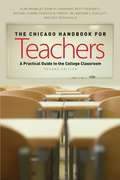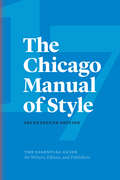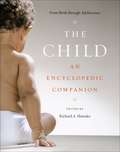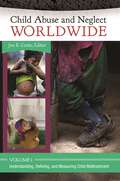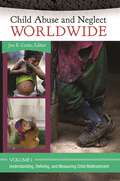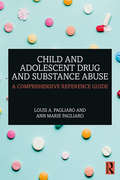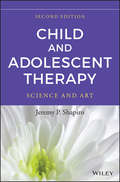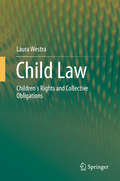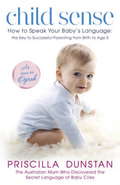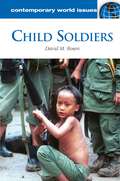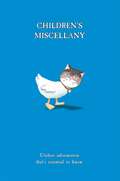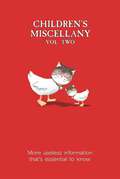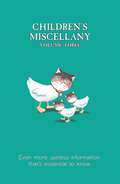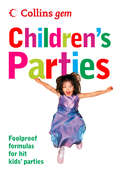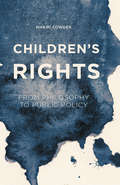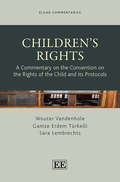- Table View
- List View
The Chicago Handbook for Teachers, Second Edition: A Practical Guide to the College Classroom (Chicago Guides to Academic Life)
by Alan Brinkley Esam E. El-Fakahany Betty Dessants Michael Flamm Charles B. Forcey, Jr. Mathew L. Ouellett Eric RothschildThose who teach college students have extensive training in their disciplines, but unlike their counterparts at the high school or elementary school level, they often have surprisingly little instruction in the craft of teaching itself. The Chicago Handbook for Teachers, Second Edition, is an extraordinarily helpful guide for anyone facing the daunting challenge of putting together a course and delivering it successfully. Representing teachers at all stages of their careers, the authors, including distinguished historian Alan Brinkley, offer practical advice for almost any situation a new teacher might face, from preparing a syllabus to managing classroom dynamics. Beginning with a nuts and bolts plan for designing a course, the handbook also explains how to lead a discussion, evaluate your own teaching, give an effective lecture, supervise students' writing and research, create and grade exams, and more. This new edition is thoroughly revised for contemporary concerns, with updated coverage on the use of electronic resources and on the challenge of creating and sustaining an inclusive classroom. A new chapter on science education and new coverage of the distinctive issues faced by adjunct faculty broaden the book’s audience considerably. The addition of sample teaching materials in the appendixes enhances the practical, hands-on focus of the second edition. Its broad scope and wealth of specific tips will make The Chicago Handbook for Teachers useful both as a comprehensive guide for beginning educators and a reference manual for experienced instructors.
The Chicago Handbook for Teachers, Second Edition: A Practical Guide to the College Classroom (Chicago Guides to Academic Life)
by Alan Brinkley Esam E. El-Fakahany Betty Dessants Michael Flamm Charles B. Forcey, Jr. Mathew L. Ouellett Eric RothschildThose who teach college students have extensive training in their disciplines, but unlike their counterparts at the high school or elementary school level, they often have surprisingly little instruction in the craft of teaching itself. The Chicago Handbook for Teachers, Second Edition, is an extraordinarily helpful guide for anyone facing the daunting challenge of putting together a course and delivering it successfully. Representing teachers at all stages of their careers, the authors, including distinguished historian Alan Brinkley, offer practical advice for almost any situation a new teacher might face, from preparing a syllabus to managing classroom dynamics. Beginning with a nuts and bolts plan for designing a course, the handbook also explains how to lead a discussion, evaluate your own teaching, give an effective lecture, supervise students' writing and research, create and grade exams, and more. This new edition is thoroughly revised for contemporary concerns, with updated coverage on the use of electronic resources and on the challenge of creating and sustaining an inclusive classroom. A new chapter on science education and new coverage of the distinctive issues faced by adjunct faculty broaden the book’s audience considerably. The addition of sample teaching materials in the appendixes enhances the practical, hands-on focus of the second edition. Its broad scope and wealth of specific tips will make The Chicago Handbook for Teachers useful both as a comprehensive guide for beginning educators and a reference manual for experienced instructors.
The Chicago Handbook for Teachers, Second Edition: A Practical Guide to the College Classroom (Chicago Guides to Academic Life)
by Alan Brinkley Esam E. El-Fakahany Betty Dessants Michael Flamm Charles B. Forcey, Jr. Mathew L. Ouellett Eric RothschildThose who teach college students have extensive training in their disciplines, but unlike their counterparts at the high school or elementary school level, they often have surprisingly little instruction in the craft of teaching itself. The Chicago Handbook for Teachers, Second Edition, is an extraordinarily helpful guide for anyone facing the daunting challenge of putting together a course and delivering it successfully. Representing teachers at all stages of their careers, the authors, including distinguished historian Alan Brinkley, offer practical advice for almost any situation a new teacher might face, from preparing a syllabus to managing classroom dynamics. Beginning with a nuts and bolts plan for designing a course, the handbook also explains how to lead a discussion, evaluate your own teaching, give an effective lecture, supervise students' writing and research, create and grade exams, and more. This new edition is thoroughly revised for contemporary concerns, with updated coverage on the use of electronic resources and on the challenge of creating and sustaining an inclusive classroom. A new chapter on science education and new coverage of the distinctive issues faced by adjunct faculty broaden the book’s audience considerably. The addition of sample teaching materials in the appendixes enhances the practical, hands-on focus of the second edition. Its broad scope and wealth of specific tips will make The Chicago Handbook for Teachers useful both as a comprehensive guide for beginning educators and a reference manual for experienced instructors.
The Chicago Handbook for Teachers, Second Edition: A Practical Guide to the College Classroom (Chicago Guides to Academic Life)
by Alan Brinkley Esam E. El-Fakahany Betty Dessants Michael Flamm Charles B. Forcey, Jr. Mathew L. Ouellett Eric RothschildThose who teach college students have extensive training in their disciplines, but unlike their counterparts at the high school or elementary school level, they often have surprisingly little instruction in the craft of teaching itself. The Chicago Handbook for Teachers, Second Edition, is an extraordinarily helpful guide for anyone facing the daunting challenge of putting together a course and delivering it successfully. Representing teachers at all stages of their careers, the authors, including distinguished historian Alan Brinkley, offer practical advice for almost any situation a new teacher might face, from preparing a syllabus to managing classroom dynamics. Beginning with a nuts and bolts plan for designing a course, the handbook also explains how to lead a discussion, evaluate your own teaching, give an effective lecture, supervise students' writing and research, create and grade exams, and more. This new edition is thoroughly revised for contemporary concerns, with updated coverage on the use of electronic resources and on the challenge of creating and sustaining an inclusive classroom. A new chapter on science education and new coverage of the distinctive issues faced by adjunct faculty broaden the book’s audience considerably. The addition of sample teaching materials in the appendixes enhances the practical, hands-on focus of the second edition. Its broad scope and wealth of specific tips will make The Chicago Handbook for Teachers useful both as a comprehensive guide for beginning educators and a reference manual for experienced instructors.
The Chicago Handbook for Teachers, Second Edition: A Practical Guide to the College Classroom (Chicago Guides to Academic Life)
by Alan Brinkley Esam E. El-Fakahany Betty Dessants Michael Flamm Charles B. Forcey, Jr. Mathew L. Ouellett Eric RothschildThose who teach college students have extensive training in their disciplines, but unlike their counterparts at the high school or elementary school level, they often have surprisingly little instruction in the craft of teaching itself. The Chicago Handbook for Teachers, Second Edition, is an extraordinarily helpful guide for anyone facing the daunting challenge of putting together a course and delivering it successfully. Representing teachers at all stages of their careers, the authors, including distinguished historian Alan Brinkley, offer practical advice for almost any situation a new teacher might face, from preparing a syllabus to managing classroom dynamics. Beginning with a nuts and bolts plan for designing a course, the handbook also explains how to lead a discussion, evaluate your own teaching, give an effective lecture, supervise students' writing and research, create and grade exams, and more. This new edition is thoroughly revised for contemporary concerns, with updated coverage on the use of electronic resources and on the challenge of creating and sustaining an inclusive classroom. A new chapter on science education and new coverage of the distinctive issues faced by adjunct faculty broaden the book’s audience considerably. The addition of sample teaching materials in the appendixes enhances the practical, hands-on focus of the second edition. Its broad scope and wealth of specific tips will make The Chicago Handbook for Teachers useful both as a comprehensive guide for beginning educators and a reference manual for experienced instructors.
The Chicago Handbook for Teachers, Second Edition: A Practical Guide to the College Classroom (Chicago Guides to Academic Life)
by Alan Brinkley Esam E. El-Fakahany Betty Dessants Michael Flamm Charles B. Forcey, Jr. Mathew L. Ouellett Eric RothschildThose who teach college students have extensive training in their disciplines, but unlike their counterparts at the high school or elementary school level, they often have surprisingly little instruction in the craft of teaching itself. The Chicago Handbook for Teachers, Second Edition, is an extraordinarily helpful guide for anyone facing the daunting challenge of putting together a course and delivering it successfully. Representing teachers at all stages of their careers, the authors, including distinguished historian Alan Brinkley, offer practical advice for almost any situation a new teacher might face, from preparing a syllabus to managing classroom dynamics. Beginning with a nuts and bolts plan for designing a course, the handbook also explains how to lead a discussion, evaluate your own teaching, give an effective lecture, supervise students' writing and research, create and grade exams, and more. This new edition is thoroughly revised for contemporary concerns, with updated coverage on the use of electronic resources and on the challenge of creating and sustaining an inclusive classroom. A new chapter on science education and new coverage of the distinctive issues faced by adjunct faculty broaden the book’s audience considerably. The addition of sample teaching materials in the appendixes enhances the practical, hands-on focus of the second edition. Its broad scope and wealth of specific tips will make The Chicago Handbook for Teachers useful both as a comprehensive guide for beginning educators and a reference manual for experienced instructors.
The Chicago Manual of Style, 17th Edition
by The University of Chicago Press Editorial StaffTechnologies may change, but the need for clear and accurate communication never goes out of style. That is why for more than one hundred years The Chicago Manual of Style has remained the definitive guide for anyone who works with words. In the seven years since the previous edition debuted, we have seen an extraordinary evolution in the way we create and share knowledge. This seventeenth edition of The Chicago Manual of Style has been prepared with an eye toward how we find, create, and cite information that readers are as likely to access from their pockets as from a bookshelf. It offers updated guidelines on electronic workflows and publication formats, tools for PDF annotation and citation management, web accessibility standards, and effective use of metadata, abstracts, and keywords. It recognizes the needs of those who are self-publishing or following open access or Creative Commons publishing models. The citation chapters reflect the ever-expanding universe of electronic sources—including social media posts and comments, private messages, and app content—and also offer updated guidelines on such issues as DOIs, time stamps, and e-book locators. Other improvements are independent of technological change. The chapter on grammar and usage includes an expanded glossary of problematic words and phrases and a new section on syntax as well as updated guidance on gender-neutral pronouns and bias-free language. Key sections on punctuation and basic citation style have been reorganized and clarified. To facilitate navigation, headings and paragraph titles have been revised and clarified throughout. And the bibliography has been updated and expanded to include the latest and best resources available. This edition continues to reflect expert insights gathered from Chicago’s own staff and from an advisory board of publishing experts from across the profession. It also includes suggestions inspired by emails, calls, and even tweets from readers. No matter how much the means of communication change, The Chicago Manual of Style remains the ultimate resource for those who care about getting the details right.
The Child: An Encyclopedic Companion
by Richard A. Shweder Thomas R. Bidell Anne C. DaileyThe Child: An Encyclopedic Companion offers both parents and professionals access to the best scholarship from all areas of child studies in a remarkable one-volume reference. Bringing together contemporary research on children and childhood from pediatrics, child psychology, childhood studies, education, sociology, history, law, anthropology, and other related areas, The Child contains more than 500 articles—all written by experts in their fields and overseen by a panel of distinguished editors led by anthropologist Richard A. Shweder. Each entry provides a concise and accessible synopsis of the topic at hand. For example, the entry “Adoption” begins with a general definition, followed by a detailed look at adoption in different cultures and at different times, a summary of the associated mental and developmental issues that can arise, and an overview of applicable legal and public policy. While presenting certain universal facts about children’s development from birth through adolescence, the entries also address the many worlds of childhood both within the United States and around the globe. They consider the ways that in which race, ethnicity, gender, socioeconomic status, and cultural traditions of child rearing can affect children’s experiences of physical and mental health, education, and family. Alongside the topical entries, The Child includes more than forty “Imagining Each Other” essays, which focus on the particular experiences of children in different cultures. In “Work before Play for Yucatec Maya Children,” for example, readers learn of the work responsibilities of some modern-day Mexican children, while in “A Hindu Brahman Boy Is Born Again,” they witness a coming-of-age ritual in contemporary India. Compiled by some of the most distinguished child development researchers in the world, The Child will broaden the current scope of knowledge on children and childhood. It is an unparalleled resource for parents, social workers, researchers, educators, and others who work with children.
The Child: An Encyclopedic Companion
by Richard A. Shweder Thomas R. Bidell Anne C. Dailey Suzanne D. Dixon Peggy J. Miller John ModellThe Child: An Encyclopedic Companion offers both parents and professionals access to the best scholarship from all areas of child studies in a remarkable one-volume reference. Bringing together contemporary research on children and childhood from pediatrics, child psychology, childhood studies, education, sociology, history, law, anthropology, and other related areas, The Child contains more than 500 articles—all written by experts in their fields and overseen by a panel of distinguished editors led by anthropologist Richard A. Shweder. Each entry provides a concise and accessible synopsis of the topic at hand. For example, the entry “Adoption” begins with a general definition, followed by a detailed look at adoption in different cultures and at different times, a summary of the associated mental and developmental issues that can arise, and an overview of applicable legal and public policy. While presenting certain universal facts about children’s development from birth through adolescence, the entries also address the many worlds of childhood both within the United States and around the globe. They consider the ways that in which race, ethnicity, gender, socioeconomic status, and cultural traditions of child rearing can affect children’s experiences of physical and mental health, education, and family. Alongside the topical entries, The Child includes more than forty “Imagining Each Other” essays, which focus on the particular experiences of children in different cultures. In “Work before Play for Yucatec Maya Children,” for example, readers learn of the work responsibilities of some modern-day Mexican children, while in “A Hindu Brahman Boy Is Born Again,” they witness a coming-of-age ritual in contemporary India. Compiled by some of the most distinguished child development researchers in the world, The Child will broaden the current scope of knowledge on children and childhood. It is an unparalleled resource for parents, social workers, researchers, educators, and others who work with children.
Child Abuse and Neglect Worldwide [3 volumes]: [3 volumes]
by Jon R. ConteIn this comprehensive three-volume set, experts from around the globe provide an understanding of child abuse knowledge and healing, detailing current therapeutic practices and policy issues.This riveting three-volume set examines classic, current, and emerging research on child neglect and abuse in countries all over the world, covering regions that include Africa, Asia, the Arab world, Latin America, Europe, and our own backyards and bedrooms in North America. The entries put maltreatment of children in the global spotlight and explain the prevalence, incidence, and risk factors for children in each setting, addressing the laws, social and cultural perceptions, and differences regarding child abuse and neglect worldwide. The chapters provide a glimpse into the historical and cultural context of abuse in regions of the world and identify the most ineffective as well as the most protective or promising responses to child maltreatment worldwide. Professionals from entry level to expert will find materials that will expand their understanding and practice with, and on behalf of, abused children and the adults in their lives.
Child Abuse and Neglect Worldwide [3 volumes]: [3 volumes]
In this comprehensive three-volume set, experts from around the globe provide an understanding of child abuse knowledge and healing, detailing current therapeutic practices and policy issues.This riveting three-volume set examines classic, current, and emerging research on child neglect and abuse in countries all over the world, covering regions that include Africa, Asia, the Arab world, Latin America, Europe, and our own backyards and bedrooms in North America. The entries put maltreatment of children in the global spotlight and explain the prevalence, incidence, and risk factors for children in each setting, addressing the laws, social and cultural perceptions, and differences regarding child abuse and neglect worldwide. The chapters provide a glimpse into the historical and cultural context of abuse in regions of the world and identify the most ineffective as well as the most protective or promising responses to child maltreatment worldwide. Professionals from entry level to expert will find materials that will expand their understanding and practice with, and on behalf of, abused children and the adults in their lives.
Child and Adolescent Drug and Substance Abuse: A Comprehensive Reference Guide
by Louis A. Pagliaro Ann Marie PagliaroBy offering unique analysis and synthesis of theory, empirical research, and clinical guidance in an up-to-date and unbiased context, this book assists health and social care professionals in understanding the use of drugs and substances of abuse by children and adolescents. A comprehensive reference for health and social care professionals, the book identifies and corrects related false narratives and, with the use of the authors’ combined experience of over 70 years of clinical and academic experience in drug and substance abuse, provides current pharmacotherapeutic and psychotherapeutic approaches for the treatment of alcohol or other dependence or use disorders among children and adolescents. The book also provides a useful reference for identifying brand/trade and street names of the drugs and substances of abuse commonly used by children and adolescents. Also included is a comprehensive, cross-referenced subject index. Clear, comprehensive, accessible, and fully referenced, this book will be an invaluable resource for professionals and students who aim to treat children and adolescents. Child and Adolescent Drug and Substance Abuse is the 19th clinical pharmacology and therapeutic text that the Pagliaros have written over the past 40 years and is the sixth that deals exclusively with drug and substance abuse.
Child and Adolescent Drug and Substance Abuse: A Comprehensive Reference Guide
by Louis A. Pagliaro Ann Marie PagliaroBy offering unique analysis and synthesis of theory, empirical research, and clinical guidance in an up-to-date and unbiased context, this book assists health and social care professionals in understanding the use of drugs and substances of abuse by children and adolescents. A comprehensive reference for health and social care professionals, the book identifies and corrects related false narratives and, with the use of the authors’ combined experience of over 70 years of clinical and academic experience in drug and substance abuse, provides current pharmacotherapeutic and psychotherapeutic approaches for the treatment of alcohol or other dependence or use disorders among children and adolescents. The book also provides a useful reference for identifying brand/trade and street names of the drugs and substances of abuse commonly used by children and adolescents. Also included is a comprehensive, cross-referenced subject index. Clear, comprehensive, accessible, and fully referenced, this book will be an invaluable resource for professionals and students who aim to treat children and adolescents. Child and Adolescent Drug and Substance Abuse is the 19th clinical pharmacology and therapeutic text that the Pagliaros have written over the past 40 years and is the sixth that deals exclusively with drug and substance abuse.
Child and Adolescent Therapy: Science and Art
by Jeremy P. ShapiroComprehensive introduction to the theory and practice of therapy Child and Adolescent Therapy: Science and Art, Second Edition relies on both psychotherapy research and clinical expertise to create a comprehensive guide to evidence-based practice for providers of child and adolescent therapy. It includes explanations of all major theoretical orientations and the techniques associated with each, with application to the major diagnostic categories. This updated Second Edition includes a new chapter on Mindfulness-Based Cognitive-Behavioral Therapies (Dialectical Behavior Therapy and Acceptance and Commitment Therapy), incorporation of recent neuroscience research, instruction in Motivational Interviewing, and guidance in using therapeutic diagrams with young clients. The book models the thought process of expert therapists by describing how the science and art of therapy can be combined to provide a strong basis for treatment planning and clinical decision-making. Theoretical concepts, empirically supported treatments, and best practices are translated into concrete, detailed form, with numerous examples of therapist verbalizations and conversations between counselor and client. Child and Adolescent Therapy: Science and Art, Second Edition: Explains the work of therapists from the ground up, beginning with fundamentals and moving on to advanced theory and technique Covers the major theoretical approaches: behavioral, cognitive, mindfulness-based, psychodynamic, constructivist, and family systems Guides therapists in planning effective treatment strategies with balanced consideration of outcome research, cultural factors, and individual client characteristics Connects treatment planning with the diagnostic characteristics of the major child and adolescent disorders For both students and skilled clinicians looking for new ideas and techniques, Child and Adolescent Therapy: Science and Art, Second Edition offers a thorough, holistic examination of how best to serve young therapy clients.
Child and Adolescent Therapy: Science and Art
by Jeremy P. ShapiroComprehensive introduction to the theory and practice of therapy Child and Adolescent Therapy: Science and Art, Second Edition relies on both psychotherapy research and clinical expertise to create a comprehensive guide to evidence-based practice for providers of child and adolescent therapy. It includes explanations of all major theoretical orientations and the techniques associated with each, with application to the major diagnostic categories. This updated Second Edition includes a new chapter on Mindfulness-Based Cognitive-Behavioral Therapies (Dialectical Behavior Therapy and Acceptance and Commitment Therapy), incorporation of recent neuroscience research, instruction in Motivational Interviewing, and guidance in using therapeutic diagrams with young clients. The book models the thought process of expert therapists by describing how the science and art of therapy can be combined to provide a strong basis for treatment planning and clinical decision-making. Theoretical concepts, empirically supported treatments, and best practices are translated into concrete, detailed form, with numerous examples of therapist verbalizations and conversations between counselor and client. Child and Adolescent Therapy: Science and Art, Second Edition: Explains the work of therapists from the ground up, beginning with fundamentals and moving on to advanced theory and technique Covers the major theoretical approaches: behavioral, cognitive, mindfulness-based, psychodynamic, constructivist, and family systems Guides therapists in planning effective treatment strategies with balanced consideration of outcome research, cultural factors, and individual client characteristics Connects treatment planning with the diagnostic characteristics of the major child and adolescent disorders For both students and skilled clinicians looking for new ideas and techniques, Child and Adolescent Therapy: Science and Art, Second Edition offers a thorough, holistic examination of how best to serve young therapy clients.
Child Law: Children's Rights and Collective Obligations
by Laura WestraChild Law starts with the question “Who is the Child?” In direct contrast to the CRC, which calls for putting the interests of the child first in all policies dealing with children, it appears that the interests of others are the major consideration de facto. In law, children’s right to protection is severely limited by the presence of a maximum age limit, with no consideration of the starting point: current and ongoing scientific research has demonstrated the effects of this non-consideration in a number of abnormalities and diseases, not only in children, but in adults and the elderly. The WHO has published a number of studies to that effect and the 2012 Report on Endocrine Disruptors more than confirms this claim. This and other scientific insights that have largely been ignored show the flaws and inadequacies of the legal regimes intended to protect children, in a number of areas, from the basic public health to the right to normal development; child labor law conventions; in conflict situations; as a result of climate and other events; children as illegal migrants and as inmates in prison camps.
Child Sense: How to Speak Your Baby's Language: the Key to Successful Parenting from Birth to Age 5
by Priscilla DunstanMake sleeping, eating, dressing and other everyday activities easier, while strengthening your bond with your child. Renowned 'baby listenener' Priscilla Dunstan reveals how each of us is born with one dominant sense mode - seeing, hearing, touching, or tasting and smelling. And shows how understanding this fact can help resolve most of the everyday conflicts that plague families, and help bridge the communication gap between you and your child. A one-stop guide to the first five years of life, read Child Sense to discover ... * What makes your baby happy * Simple techniques for dealing with everyday problems * How best to interpret your child's behaviour and maximise their potential for success and happiness in life.
Child Soldiers: A Reference Handbook (Contemporary World Issues)
by David M. RosenThis book exposes the role of children in war, describing where, why, and how children are deployed, the attempts made by international organizations to protect children, and the underlying political and cultural issues that make this such a thorny issue.In conflict-torn countries such as Myanmar and Uganda, the use of child soldiers in military and paramilitary operations continues to occur despite widespread condemnation and the efforts of organizations such as the Coalition to Stop the Use of Child Soldiers. This book will allow readers to grasp the impact of this issue for both individuals and nations worldwide. Child Soldiers: A Reference Handbook traces the evolution of child soldiers from approximately 1940 onwards, covering important historical to modern conflicts. The subject is discussed from a global perspective, with particular attention given to areas where the use of child soldiers is most prevalent. The book covers the complex underlying reasons for the continued use of child soldiers in the modern world, examines the political and psychological consequences of using children—both male and female—in military and paramilitary organizations, and describes how this subject has been addressed by international law and various human rights organizations.
Child Soldiers: A Reference Handbook (Contemporary World Issues)
by David M. RosenThis book exposes the role of children in war, describing where, why, and how children are deployed, the attempts made by international organizations to protect children, and the underlying political and cultural issues that make this such a thorny issue.In conflict-torn countries such as Myanmar and Uganda, the use of child soldiers in military and paramilitary operations continues to occur despite widespread condemnation and the efforts of organizations such as the Coalition to Stop the Use of Child Soldiers. This book will allow readers to grasp the impact of this issue for both individuals and nations worldwide. Child Soldiers: A Reference Handbook traces the evolution of child soldiers from approximately 1940 onwards, covering important historical to modern conflicts. The subject is discussed from a global perspective, with particular attention given to areas where the use of child soldiers is most prevalent. The book covers the complex underlying reasons for the continued use of child soldiers in the modern world, examines the political and psychological consequences of using children—both male and female—in military and paramilitary organizations, and describes how this subject has been addressed by international law and various human rights organizations.
Children's Miscellany: Useless Information That's Essential To Know!
by Dominique EnrightPacked full of fascinating facts that will astound and amaze, this irreverent but intelligent guide to the weird, wild and wonderful explores the bizarre truth about history, the animal kingdom, plants, planets and people.
Children's Miscellany: Volume 2
by Dominique EnrightThe sequel to the best-selling Children's Miscellany. Packed full of even more, even smarter, even stranger facts, Children's Miscellany Volume Two includes Shakespearian insults, the longest place names in the world, five ways to de-smell your trainers and how to hypnotize a chicken!
Children's Miscellany: Volume 3
by Dominique EnrightThe sequel to the bestselling Children's Miscellany: Volume One and Children's Miscellany: Volume Two. Packed full of even more, even smarter, even stranger useless information. Discover the secrets of history, the animal kingdom,plants, planets, people and much, much more...
Children’s Parties: Foolproof Formulas For Hit Kids' Parties (Collins Gem)
by Sean CalleryIf your life is hectic but you still want to organise a party that will make your child’s day, then Gem Children’s Parties is the small but indispensable book that will come to your rescue.
Children's Rights: From Philosophy to Public Policy
by Mhairi CowdenDespite the existence of the UN Convention on the Rights of the Child there still exists a debate on whether children can really hold rights. This book presents a clear theory of children's rights by examining controversial case studies. The author presents a pathway to translating rights into practical social and political instruments for change.
Children’s Rights: A Commentary on the Convention on the Rights of the Child and its Protocols (Elgar Commentaries series)
by Wouter Vandenhole Gamze Erdem Türkelli Sara LembrechtsThis comprehensive Commentary presents a contemporary legal perspective on the inherently interdisciplinary field of children’s rights. Chapters analyse each article of the Convention on the Rights of the Child, along with its Optional Protocols, providing contextualised information on the interpretation and implementation of the children’s rights provisions therein. A detailed introduction examines the history of the Convention and places it within the wider landscape of human rights and other disciplinary approaches such as the sociology of childhood. The Commentary critically engages with the text of the Convention, exploring commonly used concepts and defining pertinent terminology. The authors draw on multiple perspectives and refer to disciplines outside of law to enrich the analysis of the articles, their interpretation and the study of children’s rights as a discipline. Featuring examples of case law from regional human rights systems this Commentary provides a well-rounded insight into the status of children's rights on a global scale. Written in an accessible style, this Commentary will be a valuable reference work for students, researchers, practitioners and policymakers alike. The Commentary will be of great interest to those working within children’s rights law and human rights law. Researchers in politics, sociology and international studies who are seeking further information and insight on the rights of children will also find this Commentary to be a useful point of reference.
